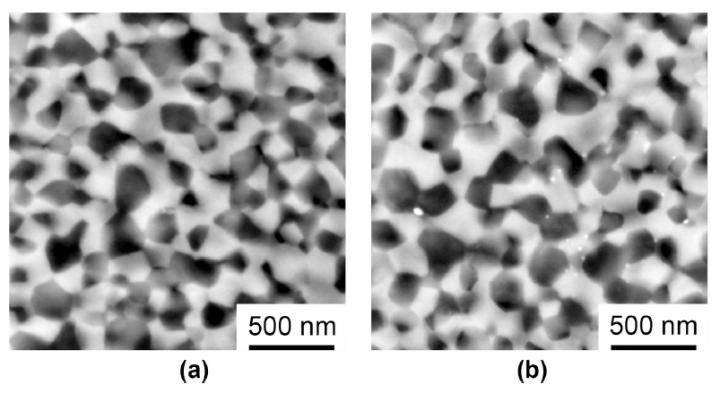Oct 23 2020
New nanocomposite ceramics (Ho3+:Y2O3-MgO) has been designed for use in high-capacity laser instruments working in the medium infrared radiation (IR) range of 2–6 µm.
 FESEM of 3 at.% Ho3+:Y2O3-MgO composite ceramics: general view (a), and area with secondary phase (b). (Image Credit: Far Eastern Federal University press office)
FESEM of 3 at.% Ho3+:Y2O3-MgO composite ceramics: general view (a), and area with secondary phase (b). (Image Credit: Far Eastern Federal University press office)
The feat was achieved by material scientists from Far Eastern Federal University (FEFU) in collaboration with an international team of scientists.
These lasers will not harm human vision and have numerous applications in different fields of economy, such as industry, medicine, atmosphere probing, and light radars. A paper presenting their work has been published in the Ceramics International journal.
Lasers that work at a wavelength of 2–6 µm are very exciting for several applications, ranging from space to medicine, and industry. But such lasers should be made up of materials with high thermal conductivity and ideal optical and mechanical characteristics.
The sample of a new optical ceramics (Ho3+:Y2O3-MgO) was made from yttrium oxide nanopowders with the incorporation of holmium (Ho3+:Y2O3) and magnesium oxide (MgO). They were sintered using a special technology at the FEFU laboratory. The resultant material has higher mechanical and thermal resistance, due to its nearly “pore-free” structure and average grain size of just 200 nm.
This feature enables ceramics to transmit over 75% of the light in the medium IR wavelengths (up to 6 µm). The material possesses a high microhardness of 10.7 GPa, which provides high-temperature resistance when lasers are running.
Prior to this development, FEFU researchers had already explored the core aspects of creating ceramic nanocomposites based on almost “pure” Y2O3-MgO. A research paper related to this had been published in early 2020.
In the new article, we demonstrated the possibility of developing an active laser medium based on a nanocomposite ceramic matrix that we had developed earlier. This time our goal was to choose a doping ion for the matrix and to optimize its content, and to test the luminescent properties of the new IR-transparent composite materials for potential laser applications. Having selected holmium as an alloying ion, we managed to obtain unique laser characteristics.
Denis Kosyanov, Head of Science and Educational Center “Advanced Ceramic Materials,” Department of Industrial Safety, Polytechnic Institute, FEFU
Kosyanov added, “For example, it became safe for the human vision which made it applicable in many areas, from parktronics to 3D landscaping. Potentially, by adding holmium to a ceramic matrix one could be able to develop highly concentrated laser media, i.e. to minimize the size of the laser element and the whole installation without reducing its capacity. Our work is the first in this field of ceramic studies.”
The researchers developed the material by using the technique of self-propagating high-temperature synthesis (SHS) on the yttrium oxide nanopowders by adding holmium (Ho3+:Y2O3) and magnesium oxide (MgO). Then, the powders were processed by spark plasma sintering (SPS) under a pressure of 30 MPa for 5 minutes at 1,300 °C.
This high-speed consolidation technique is being keenly pursued by FEFU and the Institute of Chemistry of the Far Eastern Branch of the Russian Academy of Sciences.
Denis Kosyanov believes that if nanocomposite ceramics are to be used on the industrial scale, its capacity for light transmission in the medium IR range must be boosted from 75% to 80%. Going forward, the researchers will be focusing on this task.
Journal Reference:
Safronova, N. A., et al. (2020) A novel IR-transparent Ho3+:Y2O3-MgO nanocomposite ceramics for potential laser applications. Ceramics International. doi.org/10.1016/j.ceramint.2020.08.263.
Source: https://www.dvfu.ru/en/